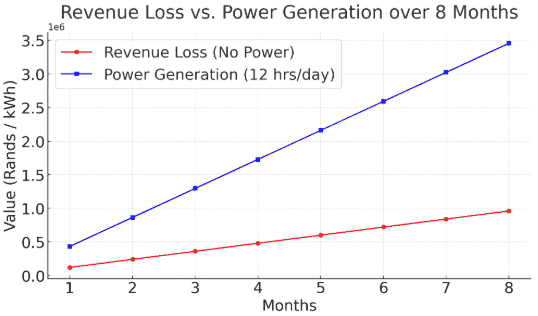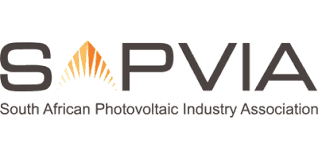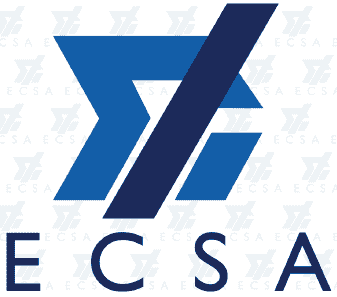WE HELP COMPANIES AVOID POWER SUPPLY FAILURES
We provide professional solar installations only if your business will be more profitable

ASSOCIATIONS & COMPLIANCE







COMMON CONCERNS
- Lack of Understanding or Knowledge
- High Upfront Costs
- Complicated Assessment Process
- Trust and Transparency Issues
- Concerns About Reliability and Maintenance
- Navigating Local Regulations and Incentives
- Limited Customization Options
- Unclear Installation Timeline
- Lack of Post-Installation Support
SOLUTION
We address these concerns with clear communication, transparency, education, customized solutions, and robust customer support that can help improve the overall customer experience in the solar installation process
Consultation Fees: $5400 (R97 500) to $21 600 (R390 000). We offer them for free.
Assessment Duration: 1 to 4 weeks
System Design and Engineering
1. Initial Site Assessment: Evaluate Site Suitability. Analyze Sunlight Exposure. Determine Load Requirements. 2. Energy Demand and System Sizing: Calculate Energy Demand. Define System Size. Select System Type. 3. Component Selection: Choose Solar Panels. Inverter Selection. Mounting System Design. Select Additional Components. 4. System Design and Layout: Create Electrical Design. Panel Layout Design. Mechanical and Structural Design. 5. Energy Yield and Financial Analysis: Energy Production Simulation.
- Cost Design Fees: 5-10% of the total project cost.
- Timeline Design Phase: 2 to 6 weeks.
Solar Feasibility Study
1. Preliminary Site Assessment: Objective: Identify the suitability of the site for a solar installation. 2. Solar Resource Assessment: Determine the solar energy potential of the site. 3. Energy Demand Analysis: Understand the energy consumption patterns of the site. 4. System Design and Configuration: Develop a preliminary design and layout of the solar PV system. 5. Financial Analysis and Cost Estimation: Assess the economic viability of the solar project. 6. Regulatory and Permitting Assessment: Determine the regulatory requirements and permitting process for the project. 7. Environmental Impact Assessment (if required): Assess potential environmental impacts of the solar installation.8. Risk Assessment: Identify potential risks and mitigation strategies. 9. Final Report and Recommendations
- Total Estimated Timeline: 6-12 weeks.
- Total Estimated Cost Range: $4,000 (R78 000) - $17,500 (R341 250).
Solar Panel Installation
1. Procure Materials and Equipment: Secure all components and materials required for installation. 2. Site Preparation: Prepare the site for the installation of solar panels. 3. Mounting System Installation: Install the mounting structure that will support the solar panels. 4. Install Solar Panels: Secure the solar panels to the mounting structure. 5. Electrical Wiring and Connections: Complete all electrical wiring and connections for the solar system. 6. Install Monitoring System (if applicable): Set up the monitoring system to track solar energy production and system performance. 7. System Testing and Commissioning: Verify that the solar system is properly installed and operational. 8. Inspection and Grid Connection: Obtain final approvals for grid interconnection. 9. Customer Training and Handover: Ensure the customer understands the operation and maintenance of their new solar system.
- Upfront Costs: $2.50 or R49 to $3.50 or R68 per watt installed.
- Timeline: Design to Completion: 3 to 6 months.
Scheduled Maintenance
| Activity | Description of Activity | Frequency | Cost (ZAR) |
|---|---|---|---|
| Visual Inspection | Checking panels, wiring, and mounting structures for any visible damage, dirt, or obstructions | Annually | 500 - 1,500 |
| Cleaning Panels | Removing dust, bird droppings, and debris from solar panels to maintain optimal efficiency. | Annually | 1,000 - 2,000 |
| System Performance Audit | Verifying energy production aligns with expected output by comparing data logs. | Bi-Annually | 2,000 - 4,000 |
| Software and Firmware Updates | Updating monitoring or inverter software to the latest version. | As recommended by the manufacturer (usually annually) | 1,000 - 2,500 |
| Battery Maintenance (if applicable) | Checking battery capacity, electrolyte levels, and cleaning terminals. | Annually | 3,000 - 7,000 |
Unscheduled Maintenance
| Activity | Description | Triggers | Cost (ZAR) |
|---|---|---|---|
| Trouble-shooting and Repairs | Identifying the root cause of the issue (e.g., faulty inverter, damaged panel, or battery issue). | System underperformance, physical damage, or error codes. | Varies (1,000 - 15,000+) |
| Emergency Repairs | Repairing storm-damaged panels or structures. Replacing burned-out components in the inverter or battery. | Severe weather events, physical impact, or unexpected failure. | Varies (1,000 - 15,000+) |
Financing Options
1. Cash Purchase: 2. Solar Loans: 3. Power Purchase Agreement (PPA): 4. Solar Lease: 5. Property Assessed Clean Energy (PACE) Financing: 6. Tax Incentives and Rebates:
